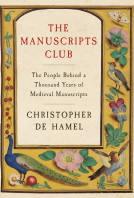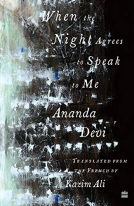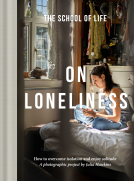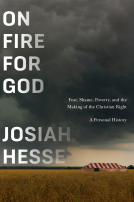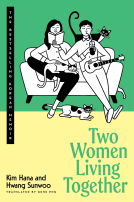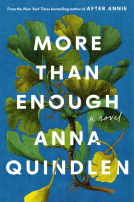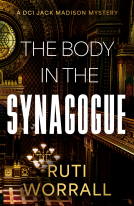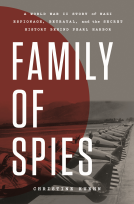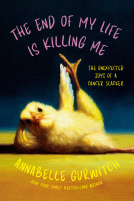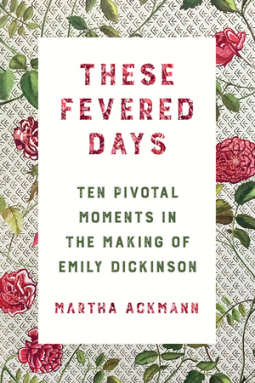
These Fevered Days
Ten Pivotal Moments in the Making of Emily Dickinson
by Martha Ackmann
This title was previously available on NetGalley and is now archived.
Send NetGalley books directly to your Kindle or Kindle app
1
To read on a Kindle or Kindle app, please add kindle@netgalley.com as an approved email address to receive files in your Amazon account. Click here for step-by-step instructions.
2
Also find your Kindle email address within your Amazon account, and enter it here.
Pub Date Feb 25 2020 | Archive Date Feb 29 2020
Talking about this book? Use #TheseFeveredDays #NetGalley. More hashtag tips!
Description
An engaging, intimate portrait of Emily Dickinson, one of America’s greatest and most-mythologized poets, that sheds new light on her groundbreaking poetry.
On August 3, 1845, young Emily Dickinson declared, “All things are ready”?and with this resolute statement, her life as a poet began. Despite spending her days almost entirely “at home” (the occupation listed on her death certificate), Dickinson’s interior world was extraordinary. She loved passionately, was hesitant about publication, embraced seclusion, and created 1,789 poems that she tucked into a dresser drawer.
In These Fevered Days, Martha Ackmann unravels the mysteries of Dickinson’s life through ten decisive episodes that distill her evolution as a poet. Ackmann follows Dickinson through her religious crisis while a student at Mount Holyoke, which prefigured her lifelong ambivalence toward organized religion and her deep, private spirituality. We see the poet through her exhilarating frenzy of composition, through which we come to understand her fiercely self-critical eye and her relationship with sister-in-law and first reader Susan Dickinson. Contrary to her reputation as a recluse, Dickinson makes the startling decision to ask a famous editor for advice, writes anguished letters to an unidentified “Master,” and keeps up a lifelong friendship with writer Helen Hunt Jackson. Toward the end of her life, she is seized with despair in confronting possible blindness.
Utilizing thousands of archival letters and poems as well as never-before-seen photos, These Fevered Days constructs a remarkable map of Emily Dickinson’s inner life. Together, these ten days provide new insights into her wildly original poetry and render a concise and vivid portrait of American literature’s most enigmatic figure.
About the Author: Martha Ackmann author of Curveball and The Mercury 13, writes about women who have changed America. The recipient of a Guggenheim fellowship, Ackmann taught a popular seminar on Dickinson at Mount Holyoke College and lives in western Massachusetts.
Available Editions
| EDITION | Hardcover |
| ISBN | 9780393609301 |
| PRICE | $26.95 (USD) |
| PAGES | 288 |
Average rating from 13 members
Featured Reviews
In her Author's Note, Martha Ackmann tells of her first encounter with Emily Dickinson's poetry in high school English when she read, "After great pain, a formal feeling comes--"* Ackmann said she "woke up" and spent a lifetime trying to understand the poem and its effect on her. It's one of my favorite Dickinson poems.
Sadly, the selections in my high school American Lit textbook did nothing for me. When a college friend said he liked Dickinson, I shuddered.
It was Steve Allen's Meeting of Minds that changed my mind. The 1977 episode paired the poet with Charles Darwin, Atilla the Hun, and Galileo. Emily Dickinson recited, "I cannot live with You--" ending with, "So We must meet apart--/You there--I--here--/With just the Door ajar/That oceans are--and Prayer--/And that White Sustenance, Despair."** I stood up to attention. Wait! This couldn't be Dickinson! This was amazing stuff.
I bought her complete poems and soon became a fan.
Ackmann's These Fevered Dreams condescends Emily's life into ten moments that give insight into her life and work. Drawing from Emily's letters and poems, photographs and new understandings, she creates a vivid and fresh portrait of the poet.
Readers encounter Emily's strong, original, and independent mind.
She preferred the struggle of doubt over unexamined certainty, unwilling to profess her faith, regardless of social pressure at Mount Holyoke Seminary.
I loved learning that Emily dove into learning to play the piano, which taught her "style", and how she played late into the night, inventing her own "weird and beautiful melodies."
The vision of a girl with dandelions in her hair taught her how "one image could change everything."
We come to understand Emily's ambition, her life-long love affair with words, her dedication to perfecting her art. She strove to understand the impact of words on others, the responsibility of the writer, and how to remain anonymous while sharing her work. She created fascicles, handsewn booklets of her poems, found after her death.
She enjoyed her costly Mount Holyoke education--$60 a year--learning algebra, astronomy, and botany. When other girls hoped to teach or become missionaries, and of course marry and raise a family, Emily had no vocation but poetry. She returned to Amhurst and became mired in deadly household duties. She did enjoy bread making.
Amhurst is not portrayed as a back-water safe zone during the Civil War; we see how it impacted the community, the shared losses, and Emily's deep anxiety.
I had not known about the vision issue that threatened her sight that brought Emily to Boston for treatment.
Emily's friendships are there: Sue, who married Emily's brother, Austin Dickinson; her school friend and fellow author Helen Hunt Jackson; Samuel Bowles who published Emily's poems clandestinely shared with him; Carlo, her beloved dog.
Emily died a spinster, but she loved the special men in her life.
There was the Rev. Charles Wadsworth, the brilliant preacher Emily met in Philadelphia, "my closest earthly friend" she wrote, and who one day unexpectedly came to her door.
Emily sent poems to Thomas Wentworth Higginson (who with Mabel Loomis Todd, a family friend, and Austin's lover, would publish the first volume of Emily's poetry. During the Civil War, Col. Higginson lead the first Negro regiment of Union soldiers and when wounded was returned home by Louise May Alcott. When they finally met, Emily talked and a dazzled Higginson listened.
Other relationships are cloaked in mystery: the secret love between Emily and her father's peer Otis Phillips Lord, and the mysterious Master to whom she wrote unsent letters.
After Emily's early death at age 55, her family discovered her fascicles of nearly 2,000 poems--and the unsent Master letters. Emily had instructed her papers be burned after her death, but her sister Vinnie could not do that.
Emily comes alive through these ten moments, along with her family and friends and her beloved Amherst.
The book is illustrated with photographs of Emily's family, friends, and homes.
I was given access to a free ebook by the publisher through NetGalley. My review is fair and unbiased.
Readers who liked this book also liked:
Jennifer Love Hewitt
Biographies & Memoirs, Nonfiction (Adult), Parenting, Families, Relationships
Kim Hana; Hwang Sunwoo
Biographies & Memoirs, Nonfiction (Adult), Parenting, Families, Relationships
Annabelle Gurwitch
Biographies & Memoirs, Health, Mind & Body, Humor & Satire
Benjamin Reynaert
Arts & Photography, Home & Garden, Reference
